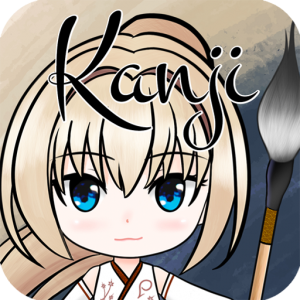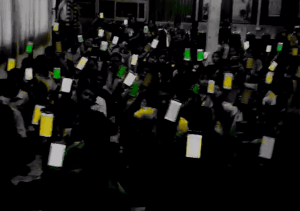Particle is the heart of Japanese language. There are many particles, and you need them to form a sentence. This post will introduce briefly 3 particles you need to form up simple sentences.
Particle: は
N は … = N is …
This is the most basic sentence structure that most Japanese language learners start with. Actually, the main part of this structure is N は. は (written as “ha,” but spelled “wa”) is a particle indicating the subject of the sentence. Japanese particles come after a noun, and it is not always needed to have anything after it.
Examples
- 私は留学生です。(watashi ha gakusei da)=I am a student
- これは?(kore wa?)=This is…? (What is this?)
Particle: の
[N1] の [N2] = [N1] ‘s [N2] = [N2] of [N1]
N2 is belong to N1, see examples
- 私の本 (watashi no hon)=my book
- 部屋の中 (heya no naka)=in the room
- A会社の高野さん (A-kaisha no Takano-san)=Mr./Ms. Takano from company A
- 日本人の友達 (watashi no nihonjin no tomodachi)=Japanese friend
- 私の日本人の友達の中川さん (watashi no nihonjin no tomodachi no Nakagawa)=My Japanese friend, Nakagawa
- 私のものだ、これは (watashi no da, kore wa) = Mine, this is (this is mine). ** N2 can be omitted, it is not needed that は must come before the description in a sentence.
Particle: か
…か? = …?
か can be added at the end of sentence to make it become a question. In casual language, it can be omitted (intonation needed to make it sounds like a question).
To answer Yes/No question
はい、… (hai) = Yes ….
いいえ、… (iie) = No. ….
Examples
- Q: あなたの本ですか?(anata no hon desu ka)=Is this your book?
A: はい、私のです。(hai, watashi no desu)=Yes, it’s mine? - Q: あなたの友達じゃなかったですか?(anata no tomodachi ja nakatta ka?)= Wasn’t that your friend? (I thought he was)
A: いいえ。(iie)=No. - これか?(kore ka?)=So, it’s this?
More examples **何 (nan/nani) = what
- これは何ですか? (kore wa nan desu ka)=what is this?
- これは何だ? (kore wa nan desu ka)=what is this? **less polite, は can be omitted
- 何だ これは? (kore wa nan desu ka)=what is this? **は can be omitted
- 何これ? (nani kore)=what is this?
- 何です? (nan desu-su)=what is this?





